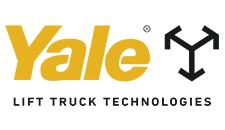What the Warehouse Labor Crisis Means for Safety
Warehouses face a tough outlook. Skyrocketing e-commerce and rapid urbanization are having a transformative impact. These global economic trends are driving warehouse growth to new levels, straining supply chains and the labor pool — and they aren’t going away. By 2030, e-commerce will account for 30% of global retail sales — up from 20% just 10 years prior. And by 2030, 60% of the world’s population will live in urban areas. To serve that growth, warehouse space will need to expand from 25 billion square feet to 30 billion by 2025.
All of that additional space requires more staff. Warehouses are already plagued by high employee turnover, which has hovered around 50% annually in recent years. The challenge of finding and retaining workers grows more intense as warehouses stare down a global workforce shortage that’s expected to reach 85 million people by 2030.
To cope, warehouses sometimes must rely on inexperienced operators, exacerbating the risk of safety incidents and threats to productivity, but this isn’t a sustainable solution. Operations need solutions to help promote safe practices and maximize operator performance. And in today’s market, that means technology isn’t for show; operational success depends on it, and warehouses can’t afford to wait. Here are some options that can help:
Advanced operator assist technology
Used as a complement to proper training, operator assist technologies can help reinforce lift truck safety initiatives that allow businesses to maximize operator productivity and equipment uptime. The Edison Award-winning Yale Reliant™ solution helps increase situational awareness and reinforce operating best practices by providing alerts and automatically adjusting lift truck performance as necessary, based on real-time information about the equipment and the operating environment.
Other operator assist solutions
Tools in this broad category can provide varying levels of support. For one, stability control systems monitor input from the lift truck, and when they detect the truck exceeding certain designated stability thresholds, they can provide alerts and apply automatic interventions to help reduce the likelihood of forward and sideways tip overs. Other tools, like truck lights and audible alarms, can help increase awareness and minimize risk for operators and pedestrians.
Training
Facilities looking to enrich their training portfolio may want to consider virtual reality simulation. Though not a substitute for OSHA-mandated hands-on training, lift truck simulators can help operators learn accurate equipment response, receiving automated, real-time feedback on their performance while working in an immersive and realistic 360° learning environment.
Robotics
Robotic lift trucks can reliably automate a range of horizontal transportation and vertical storage tasks, freeing up workers and reducing the risk of damage. Pilots and prototypes won’t do, so it’s important that operations seek providers with proven technology and expertise, and a robust service network to provide comprehensive, local support.
Telemetry
Telemetry systems like Yale Vision can allow operations to control equipment access and confirm pre-shift checklist completion. They can also provide alerts and fault codes related to hazardous driving behaviors, such as excessive speed or impacts, allowing organizations to isolate and work on remediating problem areas and reinforce best practices.
Contributed by Yale Lift Truck Technologies
Related Articles
Copyright ©2024. All Rights ReservedDesign, CMS, Hosting & Web Development :: ePublishing
